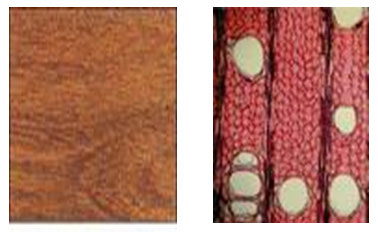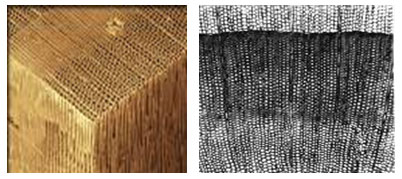Wood Identification
Timber Identification is a highly specialized and fascinating field of study. The timber which means wood of commercial importance is one of the most valuable and versatile raw material used by man and plays a vital role in the economic and industrial development on a nation.
In India alone we have well over 1600 different wood species, which show a remarkably wide range of variation in their physical properties as well as in their anatomical structure.
Based on the presence or absence of pores timbers are classified under two main groups, porous and non porous.
 Porous Wood: porous wood are produced by dicotyledonous or broad level trees. Example: Teak, Sal, Mango, Semul etc.
Porous Wood: porous wood are produced by dicotyledonous or broad level trees. Example: Teak, Sal, Mango, Semul etc.
 Non porous woods: Non porous woods are produced by coniferous or needle leaved trees.
Non porous woods: Non porous woods are produced by coniferous or needle leaved trees.
Example: Deodar, Chir, Spruce and Fir etc.
The first step in the in identification of any unknown sample of wood is to examine it carefully and observe its important anatomical and other characteristics. This is usually done with the help of trinocular research microscope (image analysis software).



